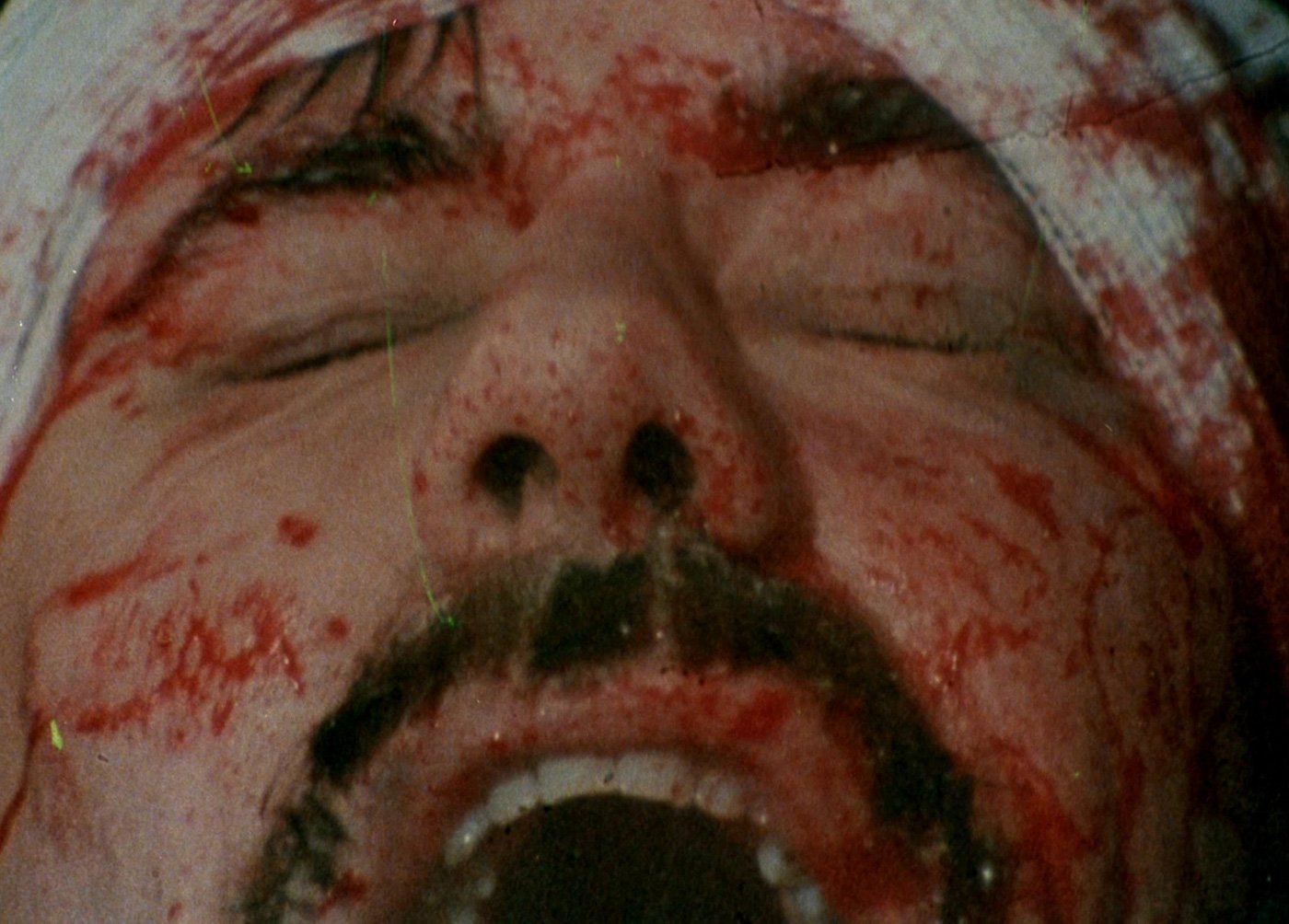Editor’s Note: This was originally published for FANGORIA on October 22, 2004, and we’re proud to share it as part of The Gingold Files.
It would be a shame if Jim VanBebber’s The Manson Family were lumped in with all the other true serial killer films that have been filling the horror scene these days. For one thing, VanBebber has been working on this project for more than a decade, long before those other films even twinkled in their makers’ eyes; On the other hand, the writer/director seeks more than a simple case record. For all the extreme blood and gore he presents, he is also interested in creating a document of the times and situations that gave birth to Charles Manson and his crimes. His evocation of the period is every bit as notable as—perhaps more so—than the brutality of the murder scenes. In fact, when VanBebber sets his events in the “present” his film is less effective.
These framing sequences involve a television producer working on a documentary about Manson, and a group of young cultists who still revere Charlie and plot the producer’s demise. Not as effective as the main body of the film, these scenes can be seen as a kind of retrospective metaphor for the forces that seem to have been arrayed against VanBebber’s quest to get his own docudrama-style feature onto the screen. Before finally receiving final funding from Blue Underground UK, the director screened a rough cut of his film in numerous venues over the past decade; I picked it up at Fantasia in Montreal in 1997 (under its original title Charlie’s Family), and found the grainy, damaged images of corruption and murder deeply disturbing. In its final form, with its sharp, raucous soundtrack, it still gets under the skin, partly because so much of it maintains an intentionally homemade feel.
Trending global politics gets bloody in a new rumored trailer
Mixing film stock (plus occasional video inserts) and misuse of footage until some of it looks as broken as the victims of Manson’s followers, VanBebber chronicles the formation of Charlie’s cult, its activities at Spahn Ranch, and the circumstances that drove them to persist. A gruesome killing spree in 1969. Most of the film’s first hour or so is not violent at all, as VanBebber mixes drama with “interviews” (played by actors) with various family members. The acting is as intentionally artless as the filmmaking, and while the performances are varied, they’re all effectively unfussy and perfectly suited to VanBebber’s down-to-earth approach. His use of a handheld camera and documentary-style editing puts you directly into the scene, and the recurring surreal shots nicely capture the hallucinatory state of the time. Even more impressive is that it does a better job than anyone expected at recreating late 1960s California in late 1980s Dayton, Ohio.
VanBebber makes it easy to get caught up in the atmosphere surrounding the farm even as he hints that all will not end well. Eventually, relentlessly, the hippie’s aura of free love gives way to rage and violence—shocking violence. Bad violence. In your face, no holds barred, drawn out, intense and static murder scenes. It’s frankly difficult to watch, even for seasoned horror fans, yet VanBebber’s in-your-face portrayal is a piece of drama that precedes it. In a sense, Van Bebber seems to be saying: “You pay your money to see a movie about murders that actually happened, in which real people were killed? Well, here’s how it really went down.” Unlike some other examples of the real killer trend, this movie doesn’t cheat Deaths that appear on screen through brilliant editing, propulsive music, or other tricks that attempt to turn the carnage into “entertainment” for better or worse, VanBebber shows it as it was.
CHUCKY has been cancelled, it’s time for kids to play in space
The Manson Family poses the same question as any film based on real-life horror: Why do we tell this story and extract horrific memories from the American subconscious? In this case, VanBeeper justifies his narrative with his raw artistry, his evocation of a specific time and place and his examination of how an era dedicated to “peace, love, and understanding” produced one of the most horrific crimes in history. It would have been easy to make a film in which the Manson cult murders were the only point; It’s VanBebber’s accomplishment that he has our interest in the family before they even pick up their guns.











